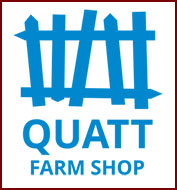
| 
|

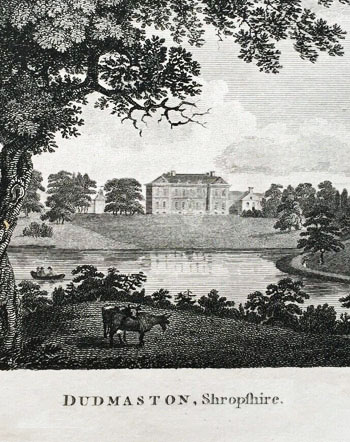 Malverns Worldwide Quatt Malvern
Malverns Worldwide Quatt Malvern4 miles south-east of Bridgnorth on the A442 road.
Shropshire
United Kingdom
Quatt in Shropshire appears in the Domesday book of 1086 as Quatone, a settlement in the hundred of Seisdon. Its population of 38 households put it in the largest 20% of settlements recorded in Domesday. Most of the landscape was woodland: the name Quatt is thought to be derived from the Celtic word coed meaning wood, and the Saxon tun, a word for farm settlement.
During the Norman Conquest in 1066, it is thought that Roger de Montgomery, Duke William of Normandy's close advisor, was entrusted with the government of Normandy in the duke's absence. Roger came to England the following year and was immediately granted land in various parts of the country including Shropshire. In December 1074, he was created Earl of Shropshire but was known as the Earl of Shrewsbury.
The earl sub-divided his Marcher lands among the Norman war mongers most capable of subduing the warlike Welsh tribes to the west. One of these, Helgot de Reisolent (born c.1050 in Résenlieu, Orne, France), was given land at Stanton, between Craven Arms and Bridgnorth. This included Quatone or Quat(t), From 1066 - 89 he built a motte and bailey castle at Stanton that became known as Castle Holgate (aka Holdgate, Stanton Holdgate and Castle Holdgate), remnants of which can still be seen.
Following the conquest, William I (the Conqueror) was succeeded by his eldest son, William (Rufus). He was succeeded by his younger brother who, as Henry I, reigned from 1100-1135. The lands of Robert Earl of Shrewsbury, brother and successor of Roger, Earl of Shrewsbury, were forfeited in 1102 and reverted to the king, Henry I, who, it is said, divided it between the sons of Helgot. The manor of Dudmaston was granted to Herbert Fitz-Helgot (b. c 1065) who, on the death of his father in 1087, became Lord of Castle Holgate. To another son, Wido (Guy) Fitz-Helgot was given the township of Quatt 'a domain of considerable extent'.
What happened to Quatt is based on two forged charters confirming early twelfth-century gifts of land made to the priory at Malvern. One is signed by Henry I at Winchester in 1127. The other is of similar date. The Winchester charter includes the lines: 'In addition I give the two hides of land which Guy Fitz Helgod restored in my hand, one of which is in Worcestershire, the other in Staffordshire, namely Quatt, quit of all gelds and all other plaints and scots, to hold in chief of me and of my successors.' Forgery or not, Quatt was added to Malvern Priory's list of lands gifted to it.
Malvern Priory was being completed about this time and the gift was a means of financing the running of the new establishment. Rivers were the highways of the medieval world and Quatt village lies one kilometre from the River Severn. Its annual tithes, paid in kind, would have been shipped down the river, perhaps as far as the Rhydd, and hauled the four miles from there to Malvern Priory to be stored in its substantial tithe barns. But all that is in the past.
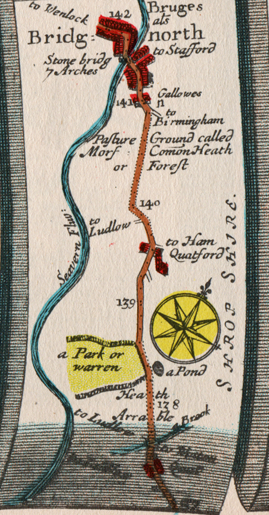
What is not in the past and subsequently lost? A hide of land in Quatt Parish was gifted to Malvern Priory in the 12th century and the locality assumed the suffix 'Malvern'. This name has perpetuated. In all parish and legal documents the parish is still known as Quatt Malvern. It comes with a population of about 200.
Map left - Ogilby's map of the coaching roads dated 1675 - Quatt is in the south with Quatford positioned centre, where the ford over the River Severn was located. The river was eventually bridged just north; hence the name Bridgnorth at the top.
Map below - the 1833 Old Series Ordnance Survey map of Quatt and surrounds.
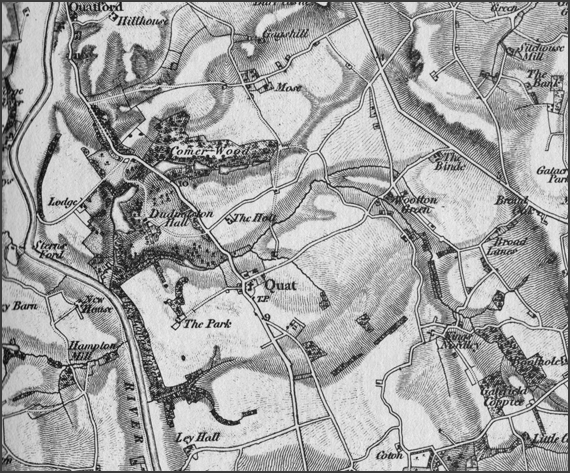
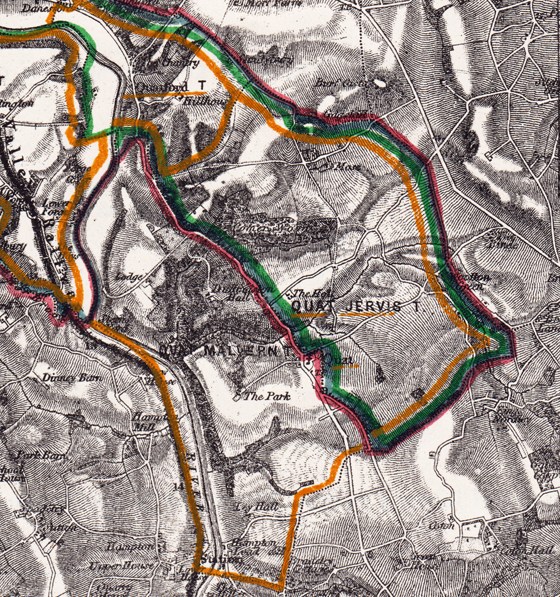
Map above - circa 1868, this map shows the parish Boundaries for Quatt outlined in orange. Quat Jervis and Quat Malvern townships have been consolidated to create the parish.
Of particular interest to visitors of Quatt Malvern is Dudmaston Hall and estate which includes the Dower House by the church. The estate dates from circa 1139. Comprising some 600 acres, it is now National Trust property. The estate is open to the public at selected times.
After the Civil War it was occupied by 1st Baronet, Sir Thomas Wolryche, a Royalist in the Civil War, M.P. and military governor of Bridgnorth. His eldest son Francis inherited the title 2nd Baronet. Sir Thomas however put the estate in trust to his second son John. John started building a new house as his residence but died of small pox in 1685 before its completion. In turn, his son William completed it in the 1690s and it is known as Dudmaston Hall. The Dower House also dates from the 17th century.
The Dower House came to particular fame in the 19th century when it became the South-East Shropshire Industrial School - a Children's Workhouse. This occurred by 1838 at the initiative of William Wolryche Whitmore at Dudmaston Hall. As a result of his initiative the school was perceived as a much better solution for children who would otherwise have been located in adult workhouses in the region. By the 1850s, when the school dropped the Industrial word in its title in favour of District, it was seen as demonstrably successful and became a model for similar elsewhere. The school remained active until the early 1900s.
In the sequencing pictures at the top of this page is one of a drinking water fountain. This now stands in the centre of the village on the corner by the church but appears to have been originally in the local school. It dates from 1869 when it was presented to the village in memory of Mary Elizabeth Carr by her brothers and sisters. In her will of 1867, Mary had set up a charity with £500.00, the interest being for extra payment to the head of Quatt Malvern School; (This was later transferred to the County Council), also £100.00, the interest being devoted to rewarding the best school scholars.
Click website below to go to Malverns Worldwide index page.
Website: Click Here
SUPPLEMENTARY INFORMATION

1) TOPOGRAPHICAL LOCATION:
England Malverns Worldwide
Malverns WorldwideInternational Interest
2) LANDSCAPE:
FarmlandRural Village
Park or Garden
3) INFORMATION CATEGORY:
A Spring, Spout, Fountain or Holy Well SiteHistory & Heritage





